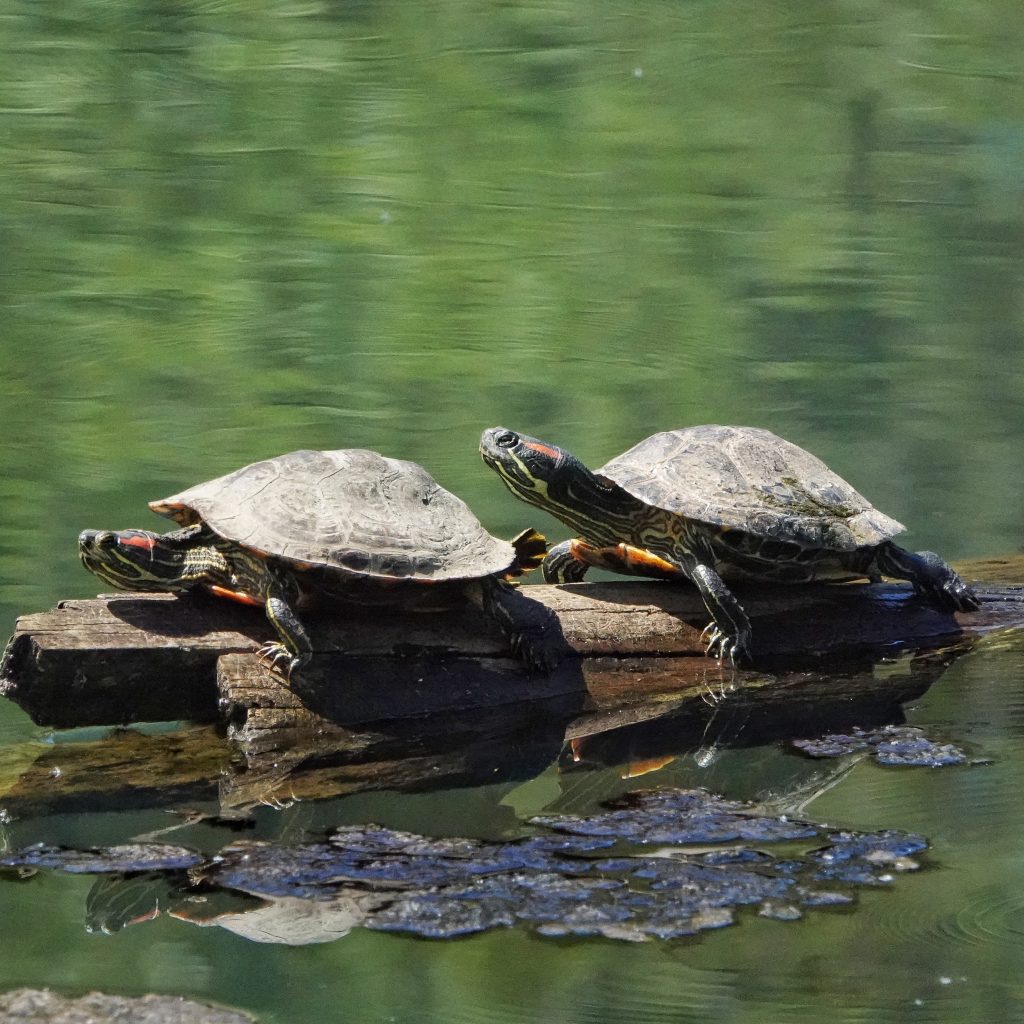
A couple years ago I posted some photographs on Facebook, confidently stating that they were Western Painted Turtles (Chrysemys picta), since for years I had been under the impression that they were the only turtles in our area that had yellow lines on their head and throat. And it was probably more or less true in the early 80s when I heard it. But that is no longer the case, as several people quickly pointed out, and several of the turtles in those photos turned out to be Red-eared Sliders, which were first reported in Oregon in 1991, and in Washington in 95. Once I had actually examined my photos the distinctions were very clear.
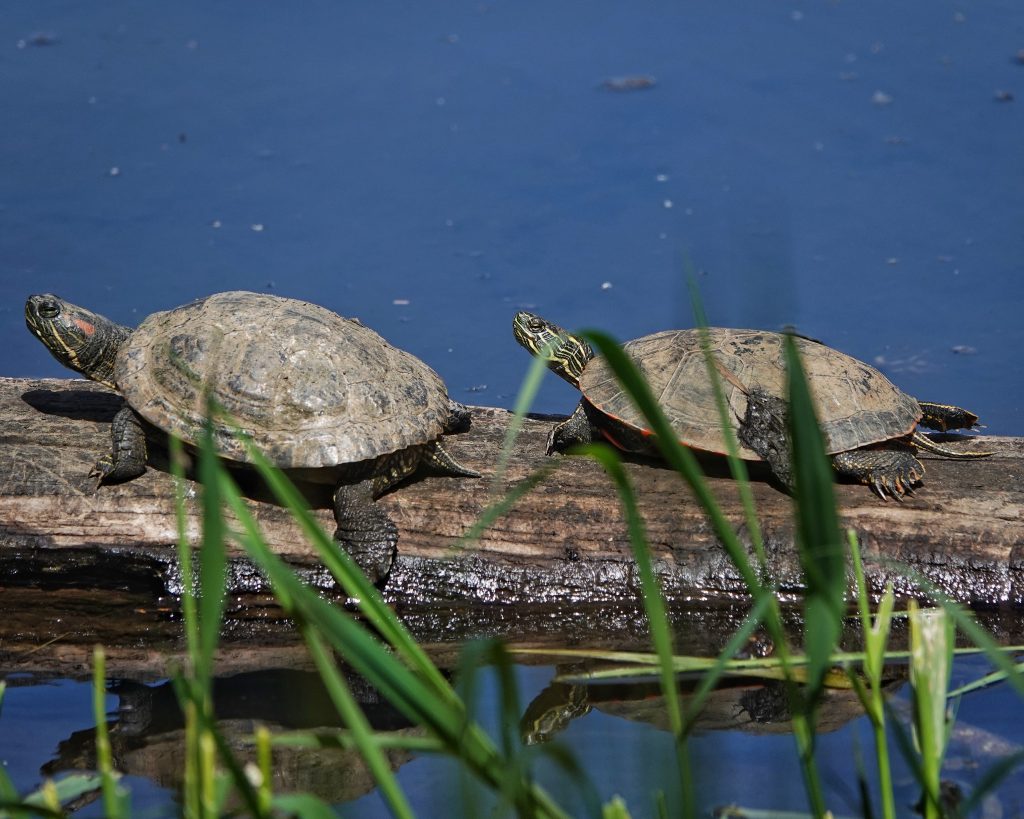
The two species are not (for the most part and with a very good, magnified view of the head) that hard to tell apart. While both have yellow markings on the exposed parts of the body, only Trachemys scripta elegans has a long, narrow, red mark behind the eyes in the area where an ear would be, if turtles had ears (though they do have ear bones beneath the skin and can hear some sounds). Red-eared sliders also have a higher carapace with a mild keel, whereas Western Painted Turtles have a low, unkeeled carapace. And the plates at the rear of the Western Painted Turtles carapace (called the marginal scutes) are smooth, while those of Red-eared Sliders are more jagged.
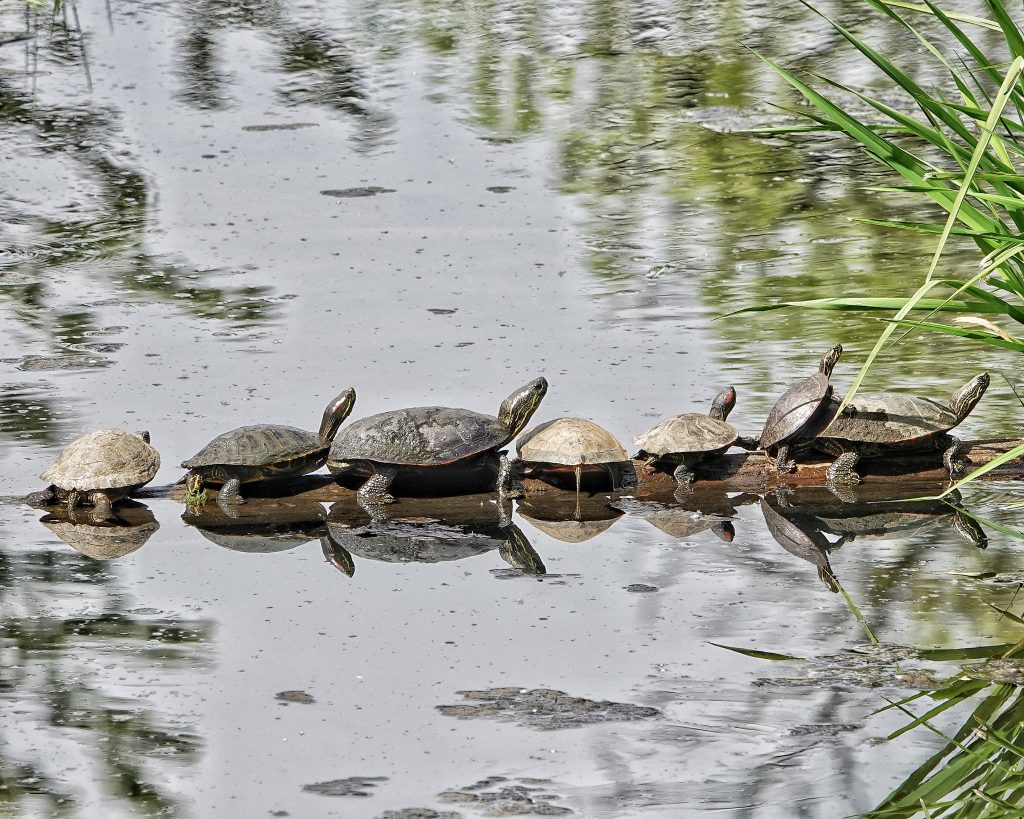
Red-eared Sliders are native to Mexico and the American southeast. They are very popular in the pet trade, but pets grow up and kids lose interest. So (probably) well meaning but ignorant people ‘give them their freedom’, and in suitable habitat the turtles reproduce, so much so that they are listed amongst the IUCN’s 100 worst invasive species in the world. And, considering that Trachemys scripta can live for 70 years in the wild (oddly, their lifespan is shorter in captivity; Or maybe not so oddly since predation of turtles over several inches long is not common in the wild, and one would have to think that free turtles are ‘happier’ with more likelihood of thriving than their imprisoned counterparts), turtles that had outgrown their aquarium, or the attention span of their owner, in 1980 are probably alive and reproducing today.
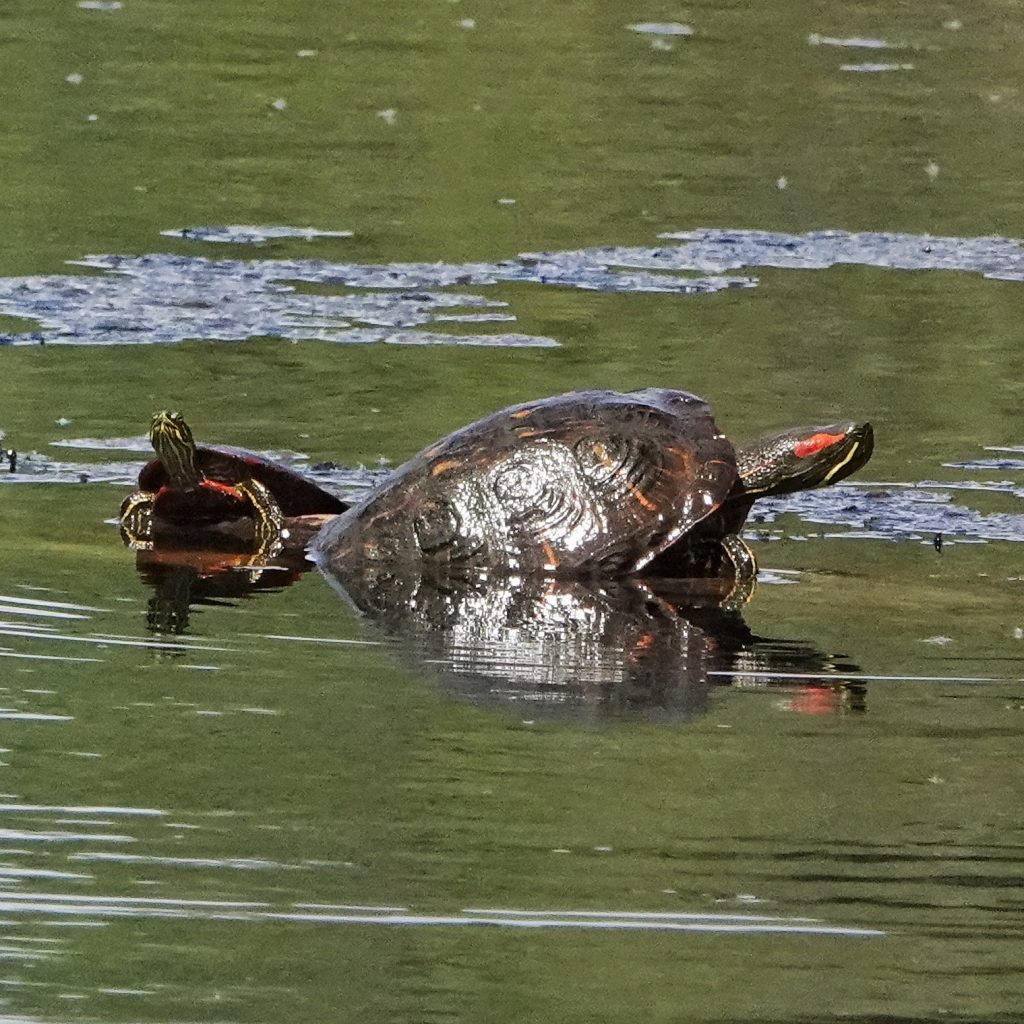
The problems with these non-natives are manifold- they compete with the natives for food, nest sites, basking locations, and good cover, they carry diseases that the natives are not immune to, and their young hatch about a month before the natives, giving them a jump on the season. Sale of Red-eared Sliders that are under 4” long have been banned in the US, although that has mostly to do with young turtles being a known vector for salmonella and other diseases. Having said all of that, it is not in any way the turtle’s fault, and they are actually very interesting critters.
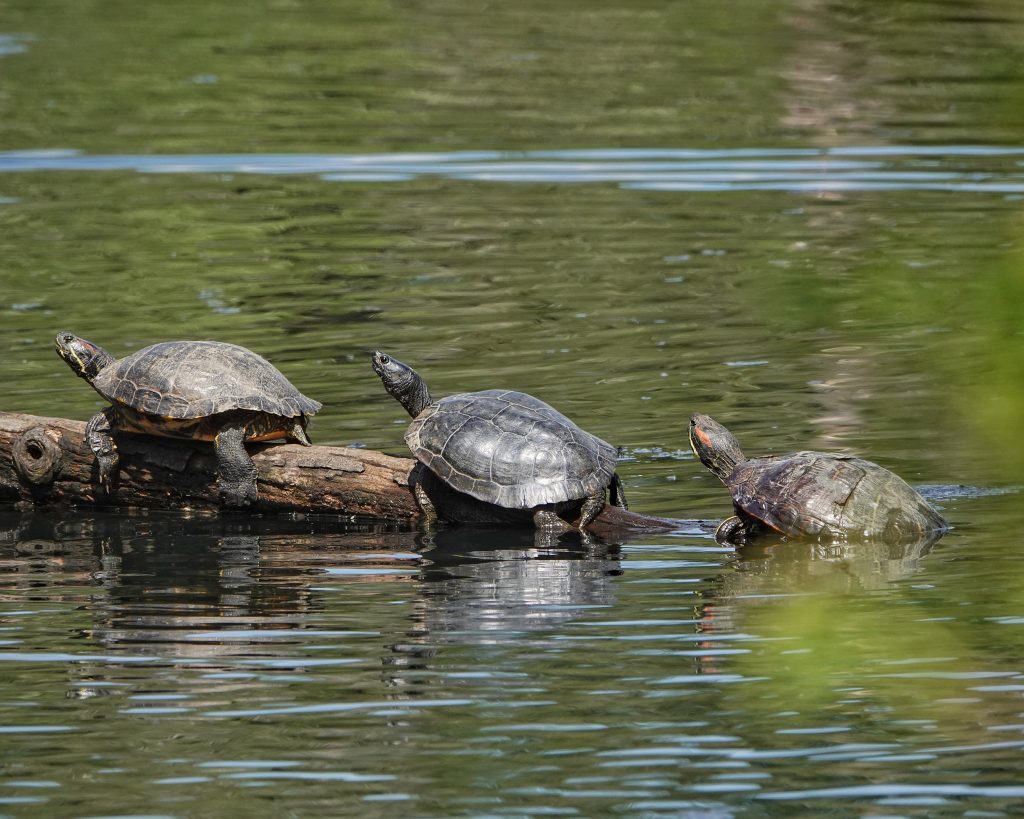
Like many other turtles, the sex of a Red-eared Slider is determined by the incubation temperature at a particular phase in the egg development, with temperatures between 70⁰-80⁰ producing all male turtles, and those over 85⁰ producing all females. Presumably, temps between 80⁰ and 85⁰ produce a mixture, although I can’t seem to corroborate that. Though they are mostly carnivores as hatchlings, they become more omnivorous with age, although whether this is because of dietary needs or the inability to successfully capture prey is unknown. One Red-eared Slider was observed preying upon a Red-winged Blackbird that had fallen into a pond!
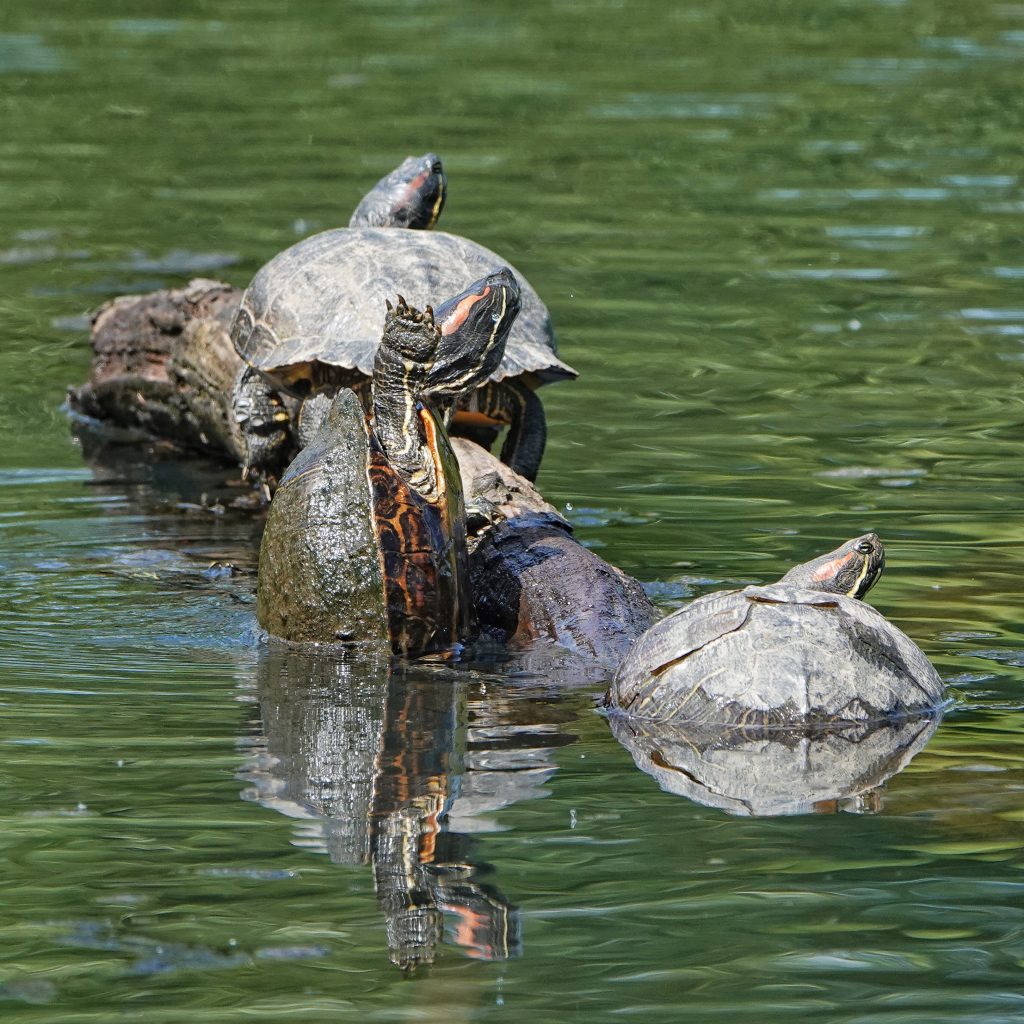
During cold periods Trachemys scripta elegans goes into a period of dormancy called brumation (warm blooded animals hibernate; cold blooded animals brumate). During the dormant period they sink to the bottom of their habitat, their heart rate and digestion slows way down, and they can go without breathing for weeks. Most reptiles that are brumating need to rouse themselves periodically to drink, but that is obviated for turtles by being surrounded by water. However, on some warm days they may awaken to feed a bit and gather some oxygen for their next extended nap.
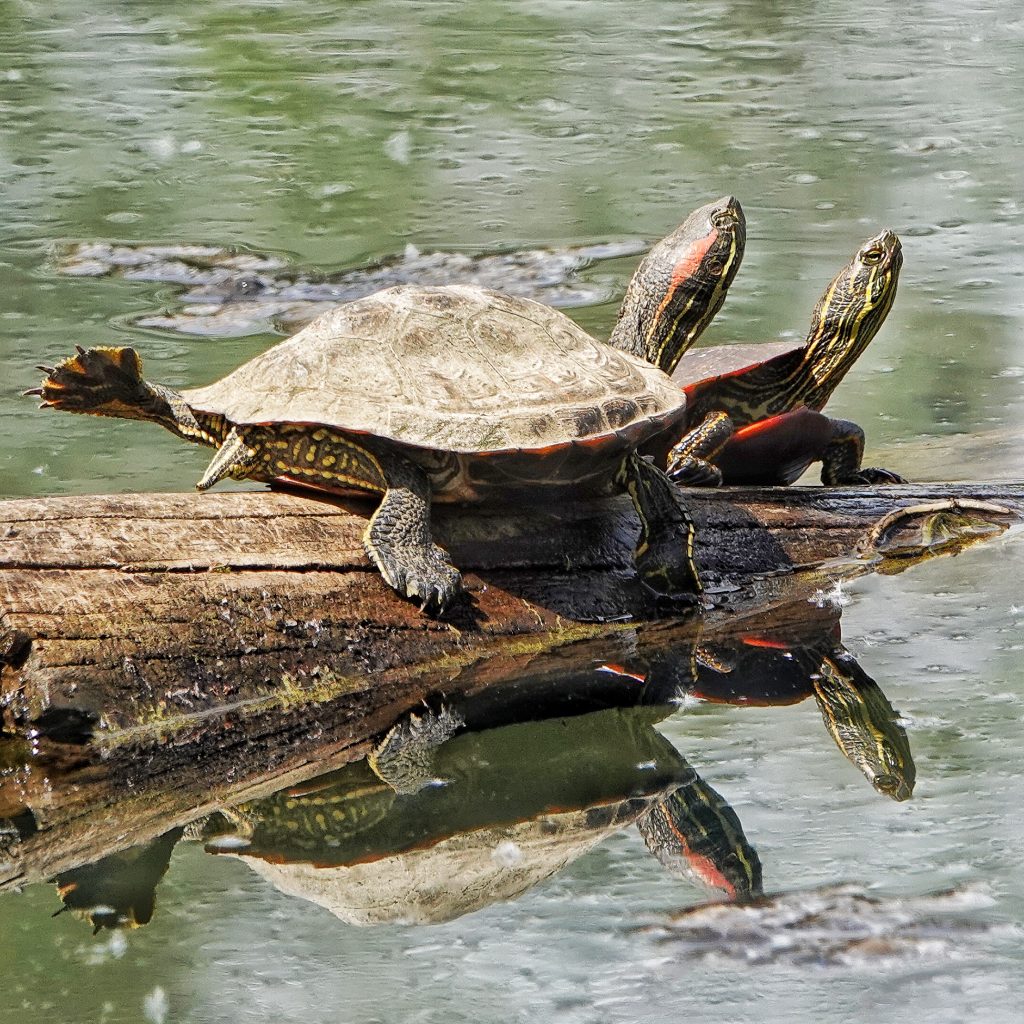
This profile, and the accompanying one on the Western Painted Turtle, will be the last posts I routinely share links to with all of the appropriate Facebook groups to which I belong. I will still periodically share links there, to enable newcomers to find my site. I hope all of you choose to either follow me on Facebook (all posts will be shared to my wall/timeline/homepage) or subscribe to the free emails generated by this website. For those of you who do not do so, well, it’s been nice sharing my passion for the wild living organisms of the PNW with you, and I wish you many happy hours exploring the amazing diversity of our region.
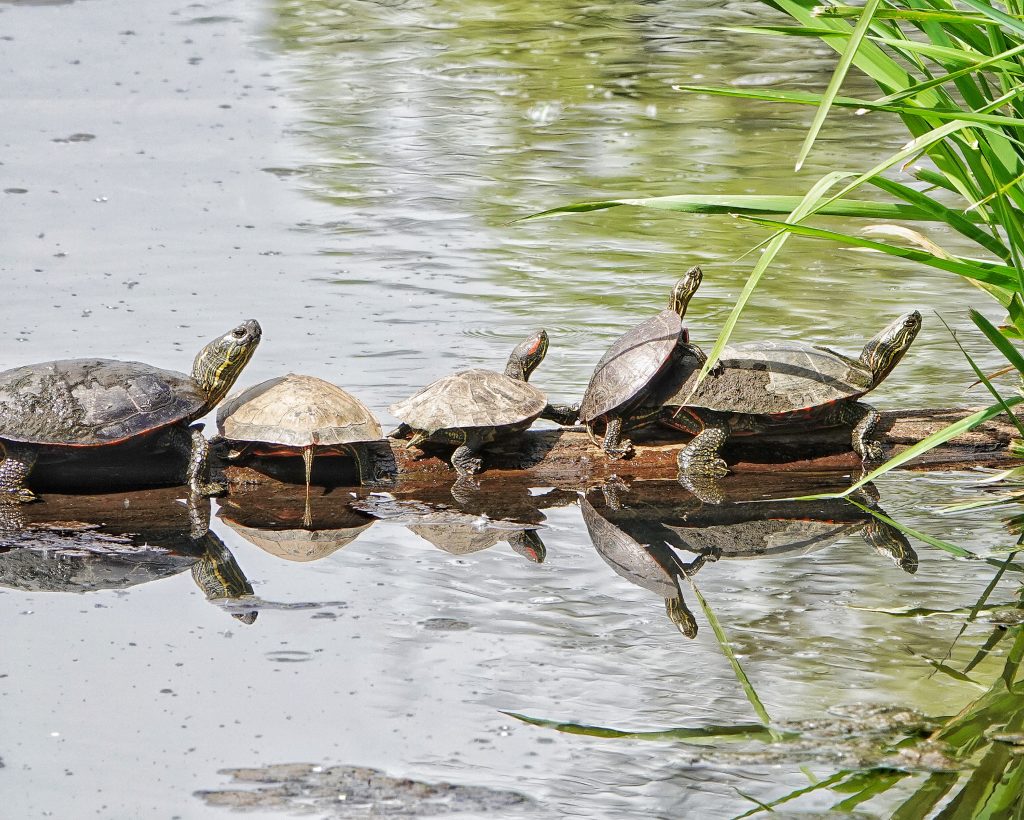
Description-Large (up to 14.5” long) turtle with a green to dark brown, domed, somewhat keeled carapace, yellow markings on the head, throat, legs, and tail, and usually with an elongated red mark behind the eyes, although that can fade with age; the carapace may have streaks, bars, or spots of yellow, although some are unmarked, and they are frequently obscured by mud anyway; males are smaller and darker, with longer front claws (to help them hold on during the mating process), and longer, thicker tails; turtles do not have teeth, instead utilizing sharp, serrated ridges on their jaws to hold prey and chew.
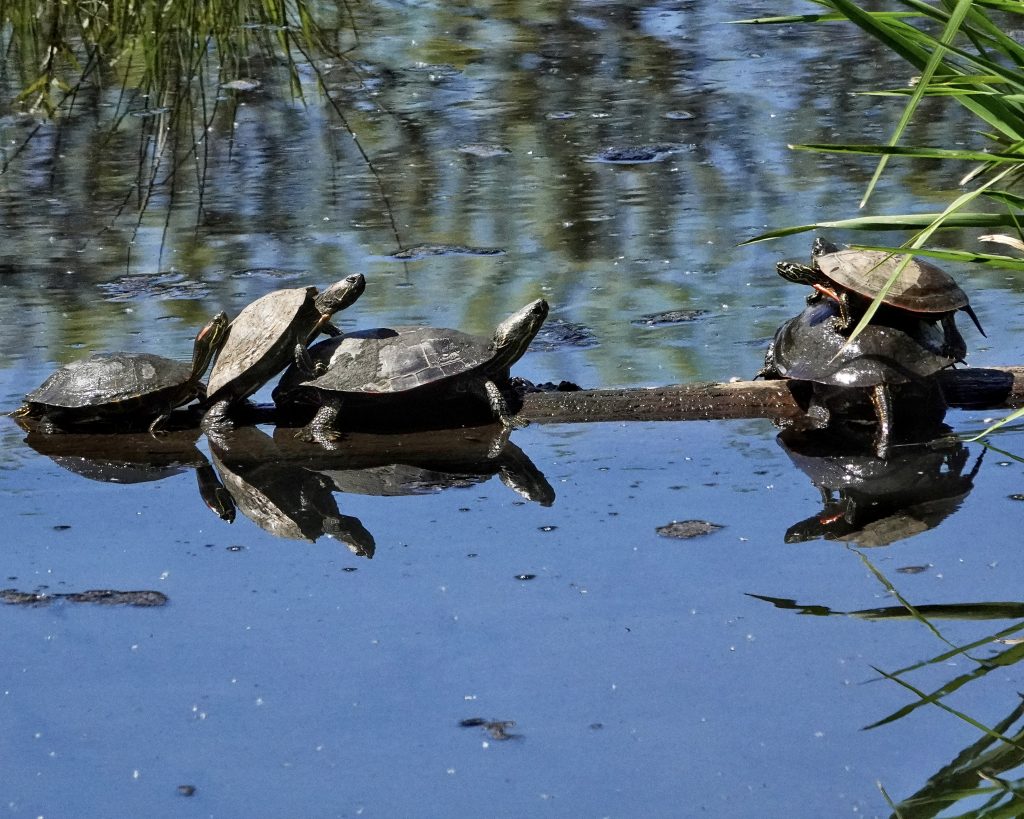
Similar species-Western Painted Turtles lack red markings on the head, have shallower carapaces that lack a keel, and have smooth rear marginal scutes; Western Pond Turtles lack yellow markings on head, and also have smooth rear marginal scutes.
Habitat– Slow moving and still water with abundant aquatic vegetation; can tolerate brackish waters.
Range-Native to Mexico and the southeastern US; mostly west of the Cascades in our region (Puget Sound, Columbia and Willamette River), but spreading, and can survive the harsh winters of the eastside.
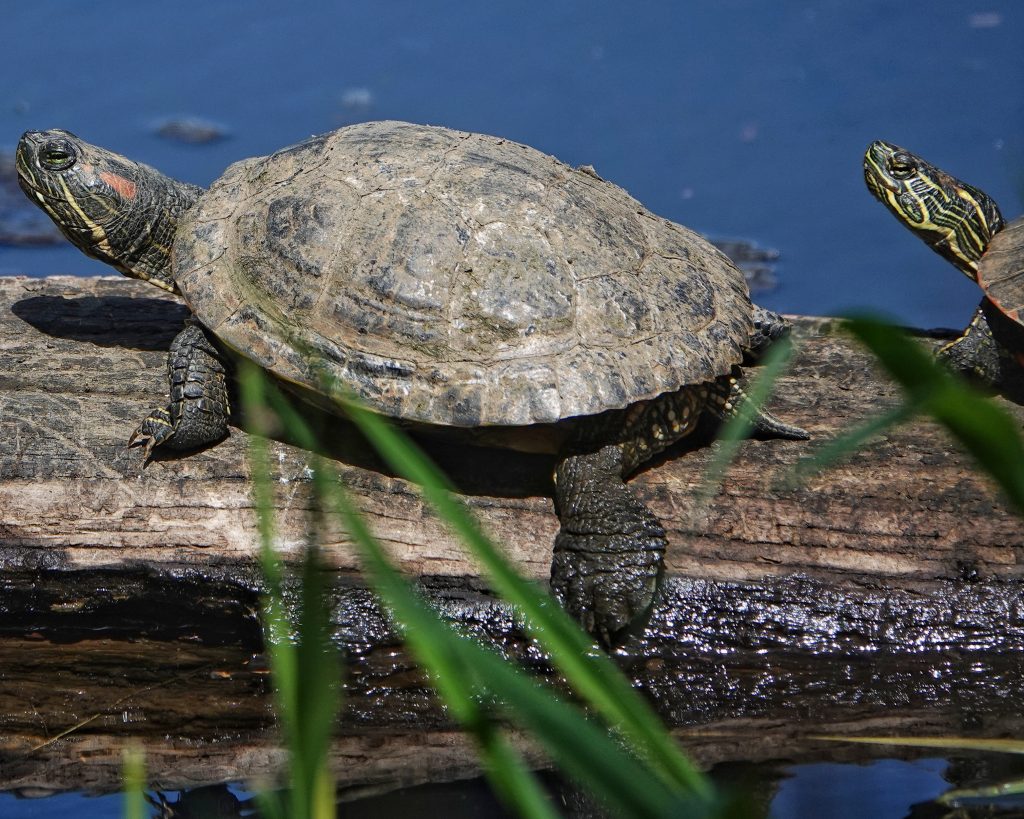
Eats-Omnivorous; aquatic and terrestrial plants, snails, insects, tadpoles and small frogs, fish, worms, snails, and other invertebrates; the young are primarily carnivorous, but eat progressively more vegetation as they age.
Eaten by-Until they are over 4-5” long they are prey for raccoons, otters, mink, foxes, skunks, large fish, herons, egrets etc.; fairly invulnerable once they reach a certain size if they can retract into their shell, but as hatchlings moving toward the water they are probably preyed upon by almost all vertebrate predators.
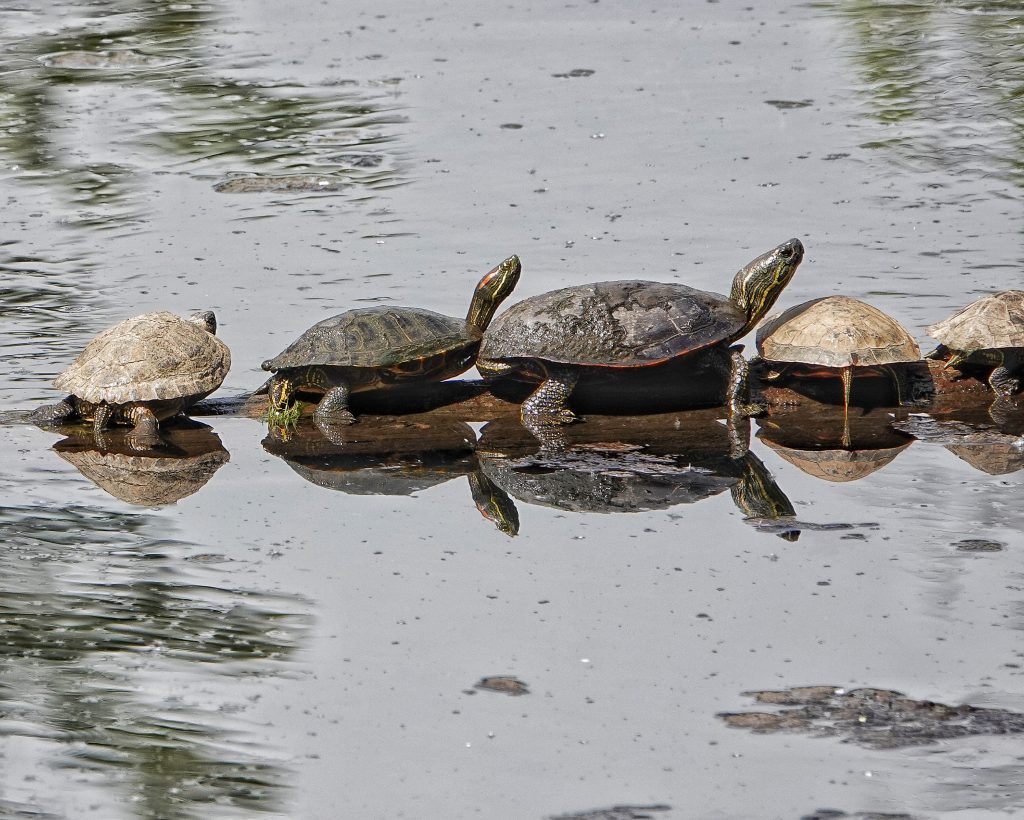
Adults active-Year around, but may be dormant (brumate) during the coldest months of the year
Life cycle-Breeding occurs from March to June and happens underwater, and eggs are laid from April to July; females are sexually mature in 2-5 years; eggs are laid in nests dug into dry soil (preferably sandy, with good sun exposure, seldom more than 5” deep) using the hind legs, and may be some distance from water; stores viable sperm, and fertilizes the eggs as they are laid; 2-25 eggs per clutch, and may lay up to 5 clutches per year; eggs hatch in 2-3 months, and the hatchlings take about 3 weeks to consume the yolk sac, and must heal the split in the plastron (ventral part of the shell) where the yolk sac was attached before they can enter the water; may live 50-70 years.
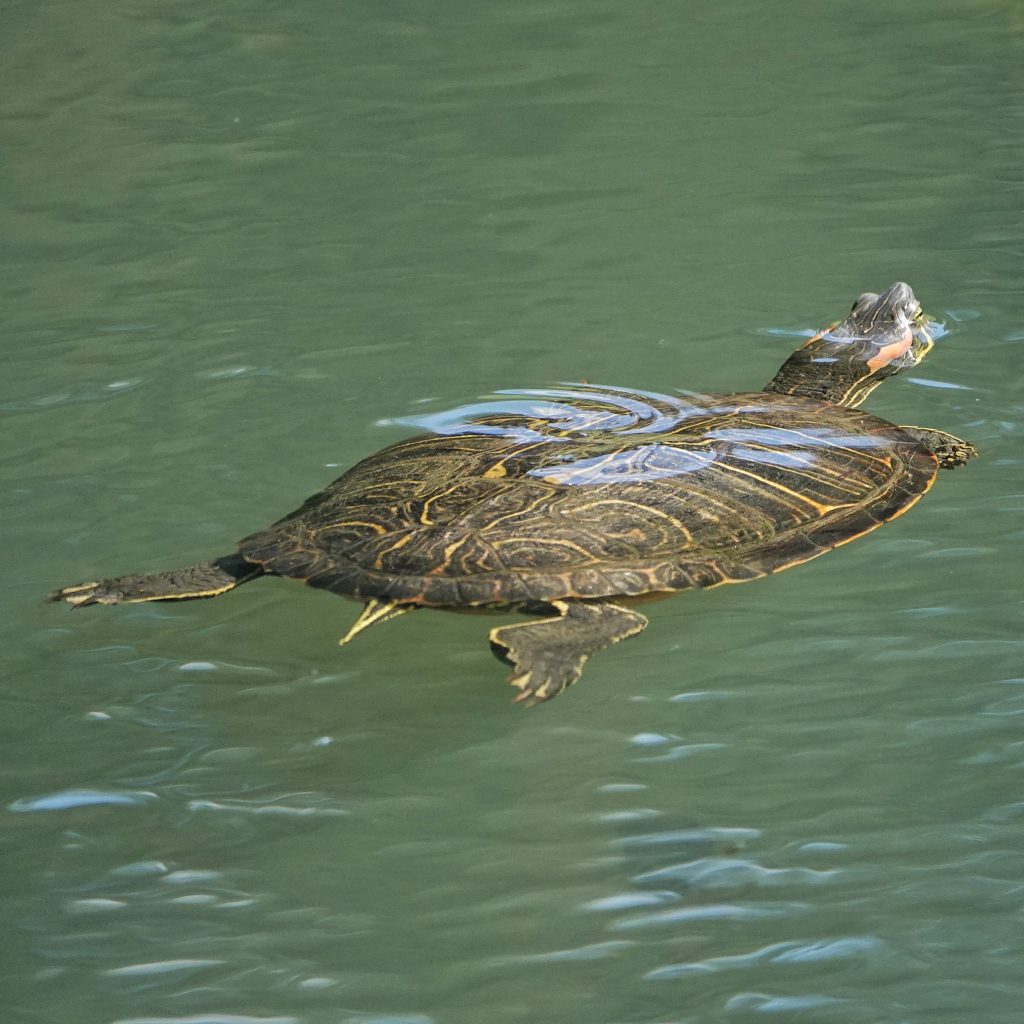
Etymology of names–Trachemys is from the Greek for ‘rough turtle’, and refers to the roughness of the growth rings (annuli) of the pleural scutes (the large plates in the middle of each side of the carapace). The specific epithet scripta is from the Latin for ‘writing’, and references the letter like markings on the carapace. The name slider refers to their ability to quickly slide from a basking platform into the water.
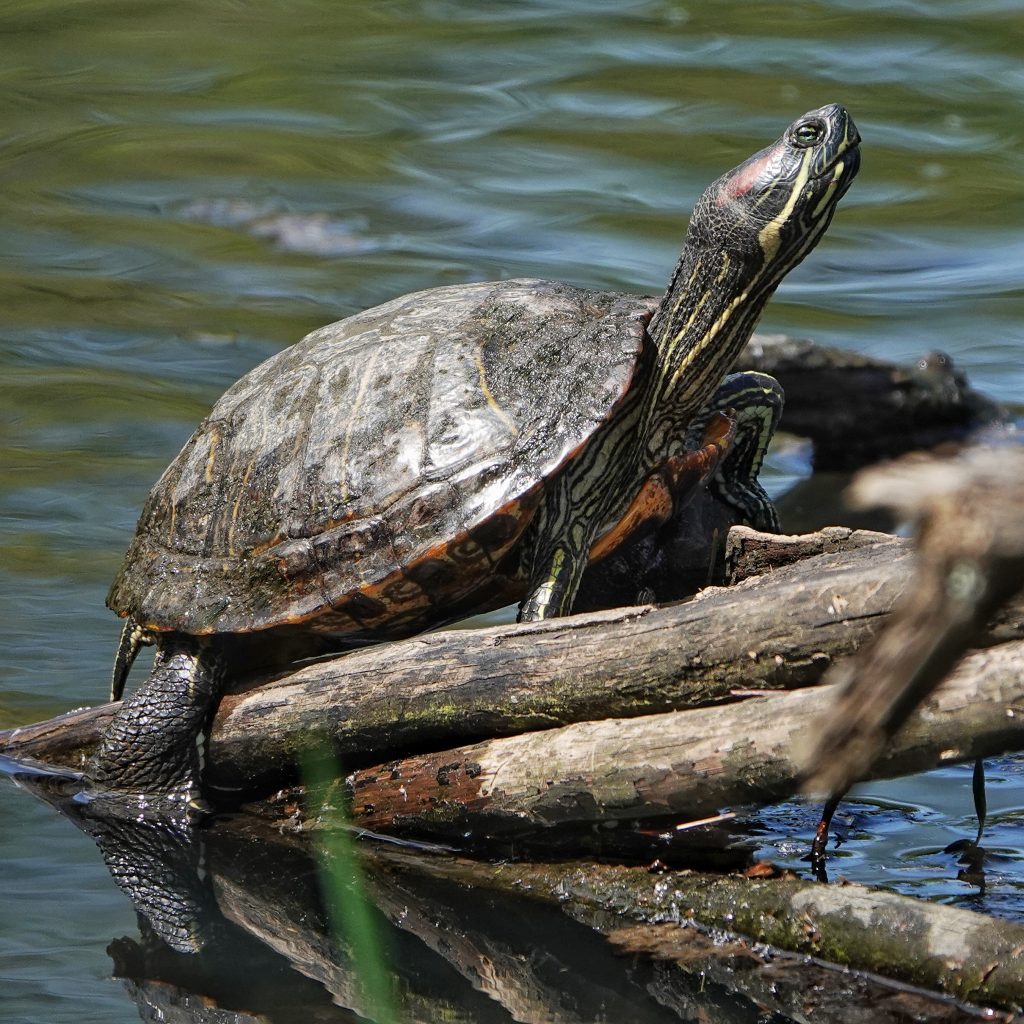
http://www.californiaherps.com/turtles/pages/t.s.elegans.html
Trachemys scripta | The Reptile Database
https://animaldiversity.org/site/accounts/information/Trachemys_scripta.html
https://urbanfishkeeping.com/painted-turtle-vs-red-eared-slider/
http://www.iucngisd.org/gisd/100_worst.php
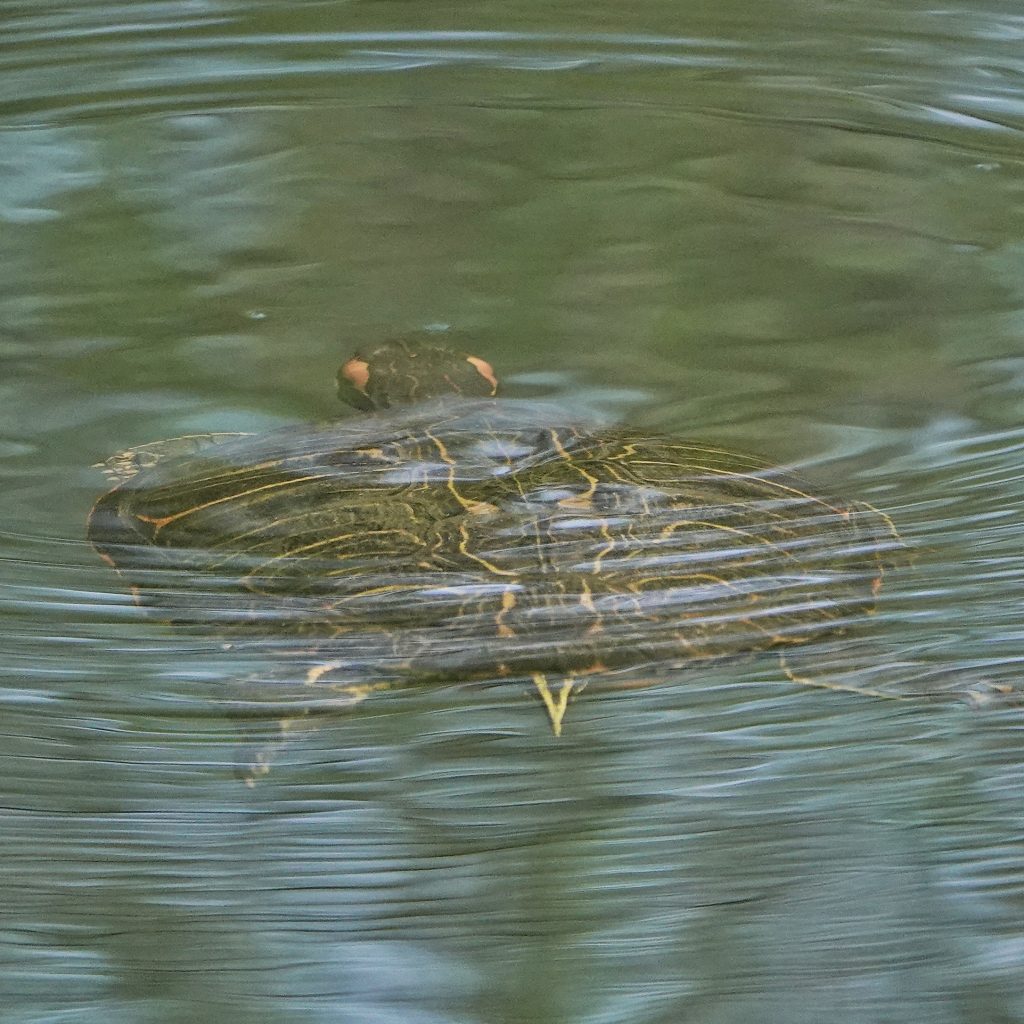
1 thought on “Trachemys scripta elegans (Red-eared Slider)”